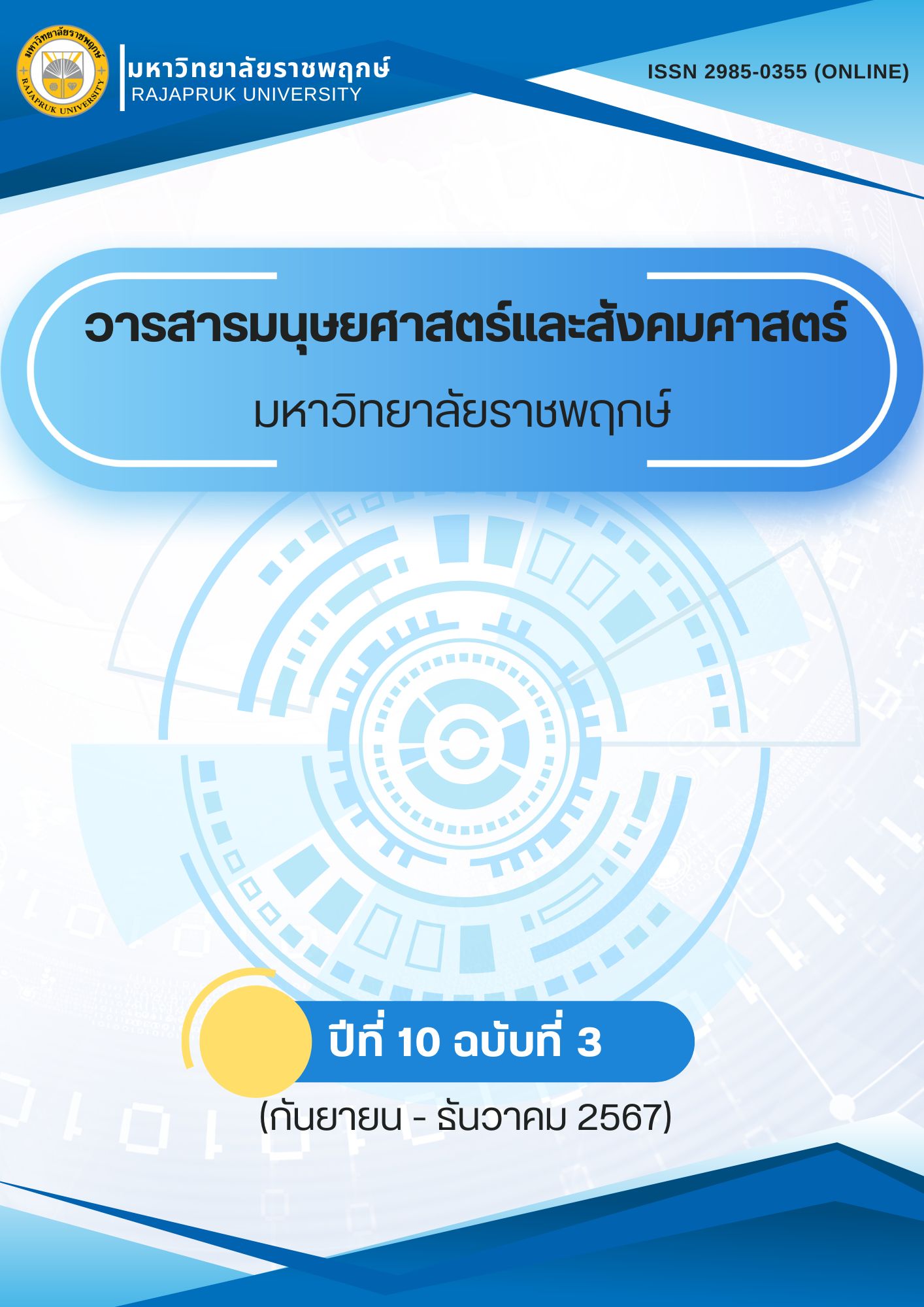Clustering of Thai Confectionery Consumers by Personal Characteristics, Marketing Mix, Buyer’s Decision Process and Buyer’s Response
Main Article Content
Abstract
This research aimed to categorize Thai confectionery consumers based on personal characteristics, marketing mix, purchase decision process, and buyer’s response. It was quantitative research by collecting data from questionnaires. The sample was 421 Thai confectionery consumers in Thailand.
The study found that Thai confectionery consumers can be grouped into 4 groups, with the largest volume in the fourth group (33%). This group of consumers were all females (100%) which were more than half of Gen Y (66.9%), single (76.3%), with bachelor's degrees (71.9%). The most consumers were employees of private companies (53.2%), lived mostly in the south (54%), and mainly decided to purchase Thai confectionery by themselves (61.2%). There were a variety of Thai confectionery preference and the most favorite were Pinched gold egg yolk, Golden drop, Golden thread, Jackfruit seed (32.4%). The average expenditure on Thai confection per purchase was 100-300 baht (71.2%). Notably, this group purchased Thai confections exclusively from specialized shops (100%) and preferred cash for payment (51.8%). In addition, consumers in this group valued the marketing mix more in Process, Place, and Physical evidence than other groups in terms of the purchasing decision process found that consumers in the fourth group had a higher level of opinion about the decision-making process than other groups in all aspects showed that the consumers truly value and love the consumption of Thai confectionery.
Article Details
References
กรรณิการ์ ศรีสมทรง, เรวดี เพชรศิราสัณห์, นัยนา หนูนิล. (2564). พฤติกรรมการบริโภคอาหารและ ภาวะโภชนาการของผู้ใหญ่และผู้สูงอายุ จังหวัดนครศรีธรรมราช. วารสารรามาธิบดีพยาบาลสาร, 27(2), 232-246.
จาริณี อิศรางกูร ณ อยุธยา. (2559).ความพึงพอใจและพฤติกรรมการบริโภคขนมไทยของลูกค้า
ชาวไทยในจังหวัดกรุงเทพมหานคร. [ปริญญามหาบัณฑิต]. มหาวิทยาลัยกรุงเทพ.
จิรวรรณ ตั้งไพฑูรย์. (2557). การวิเคราะห์ความสมนัยระหว่างช่วงวัยความพึงพอใจในปัจจัยส่วนประสมทางการตลาดเเละความภักดีต่อตราสินค้าร้านขนมหวาน จังหวัดเพชรบุรี. [ปริญญามหาบัณฑิต]. มหาวิทยาลัยศิลปากร.
ชลลดา มงคลวนิช และรัตนาภรณ์ ชาติวงศ์. (2557). ภาพลักษณ์ขนมไทยในสายตาของเยาวชนไทย.วารสารกระแสวัฒนธรรม, 15(27), 39-50.
ชูเกียรติ อ่อนชื่น. (2563). หีบห่อขนมไทย : ภูมิปัญญาท้องถิ่นในยุคประเทศไทย 4.0. วารสารศิลปกรรมศาสตร์ มหาวิทยาลัยศรีนครินทรวิโรฒ. 24(2), 113-126.
ณภัคอร สงวนตั้ง. (2558). พฤติกรรมผู้บริโภควัยทำงานในกรุงเทพมหานครต่อการบริโภคขนมไทย. [ปริญญามหาบัณฑิต]. มหาวิทยาลัยเชียงใหม่.
ธนาคารไทยพาณิชย์. (ม.ป.ป.). รู้พฤติกรรม LGBTQ ฮีโร่กำลังซื้อพลิกฟื้นยอดขาย. ธนาคารไทยพาณิชย์ (SCB) | หน้าหลัก - ลูกค้าบุคคล. https://www.scb.co.th/th/personal-banking/stories/tips-for-you/lbgqt-increase-sales-banner.html
ปดิวลัดดา บวรศักดิ์. (2566). เปิดข้อสันนิษฐาน ทำไมคนไทยเรียกขนมว่า “ขนม”. ศิลปวัฒนธรรม. https://www.silpa-mag.com/culture/article_123299
สุรชา บุญรักษา. (2558). แนวทางการพัฒนากลยุทธ์การตลาดเพื่อสร้างการรับรู้คุณค่าขนมไทยในจังหวัดสมุทรสาครตามแนวคิดเศรษฐกิจสร้างสรรค์. [ปริญญามหาบัณฑิต]. มหาวิทยาลัยศิลปากร.
สุมลรัตน์ ฐาปนวรเกียรติ. (2549). ธุรกิจขนมไทยสู่วัฒนธรรมร่วมสมัย. [ปริญญามหาบัณฑิต]. มหาวิทยาลัยธรรมศาสตร์.
สำนักงานคณะกรรมการส่งเสริมการลงทุน. (2566). ข้อมูลทั่วไปด้านประชากร. https://www.boi.go.th/index.php?page=demographic
สำนักงานบริหารและพัฒนาองค์ความรู้ (องค์การมหาชน). (2564). ส่องเทรนด์ธุรกิจขนมไทย. okmd.or.th - กระตุกต่อมคิด เพื่อพัฒนาความคิด เพิ่มความรู้ สร้างสรรค์ภูมิปัญญา. https://www.okmd.or.th/okmd-kratooktomkit/4646/
สำนักงานเลขานุการของคณะกรรมการยุทธศาสตร์ชาติ. (2562). ยุทธศาสตร์ชาติ 20 ปี (พ.ศ. 2561 - 2580). สำนักพิมพ์สำนักงานคณะกรรมการพัฒนาการเศรษฐกิจและสังคมแห่งชาติ
อาริษา สมประสงค์. (2559). สีสันของขนมไทย.[ปริญญามหาบัณฑิต]. มหาวิทยาลัยนเรศวร.
Brasier, J. (2022, October 31). It all comes back to the plate: Food’s role in understanding culture. Insight Vacations. https://www.insightvacations.com/blog/understanding-culture/
Bourdieu, P. (1979). La Distinction: Critique sociale du jugement. Minuit.
David, M., & Sutton, C. D. (2011). Social research: An introduction. SAGE.
Jain, M. K. (2013). An analysis of marketing mix: 7Ps or more. Asian Journal of Multidisciplinary Studies, 1(4), 23-28
Kotler, P. (1997). Marketing Management: Analysis, Planning, Implementation and Control. Prentice-Hall.
Kotler, P., Kartajaya, H., & Setiawan, I. (2016). Marketing 4.0: moving from Traditional to Digital. Wiley.
Likert, Rensis. (1967) . The Method of Constructing and Attitude Scale. New York: Wiley & Son.
Seth Godin (2012). Whatcha Gonna Do with That Duck?: And Other Provocations, 2006-2012, Penguin.
Yamane, T. (1973). Statistics: An Introductory Analysis. Harper & Row Publication.


